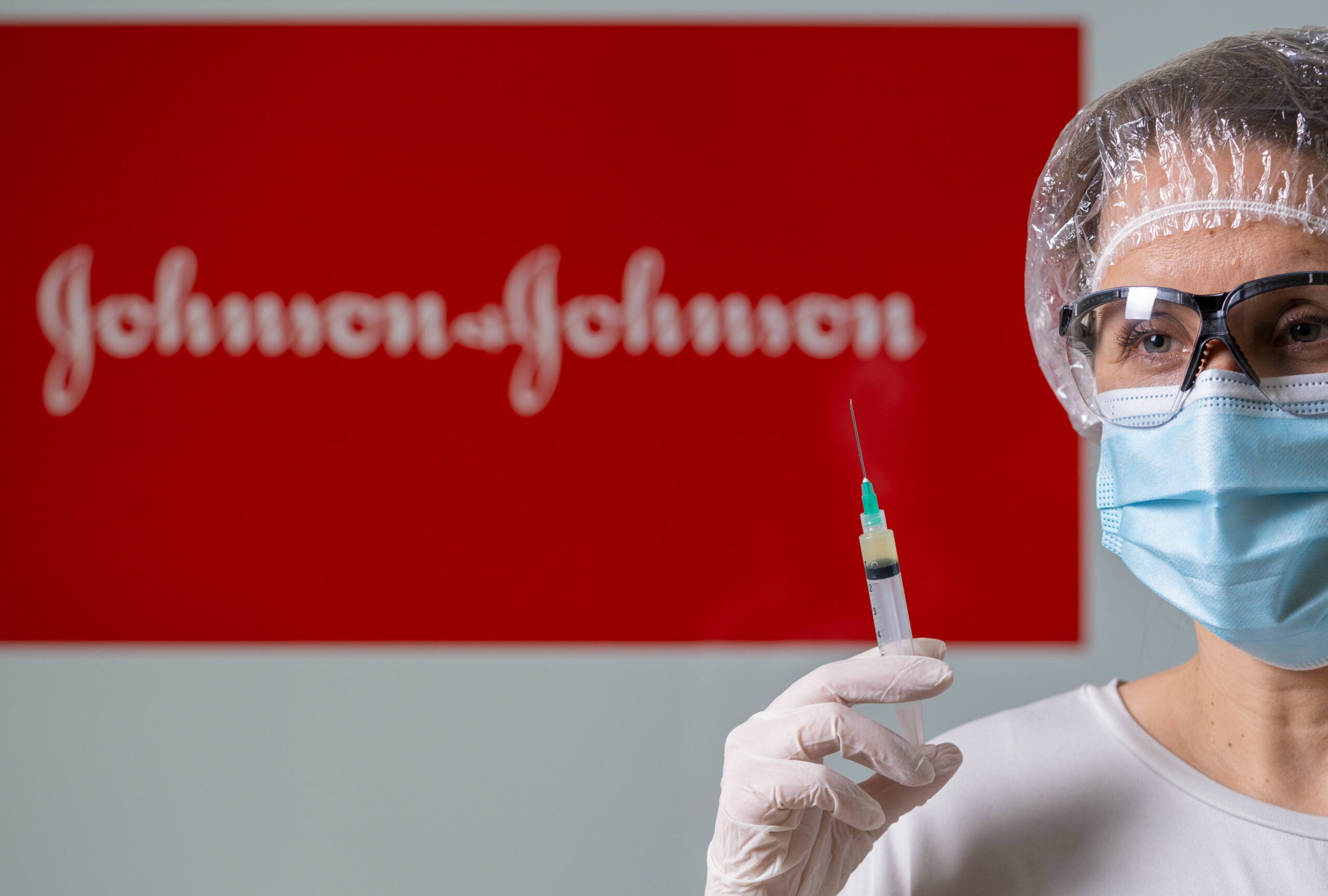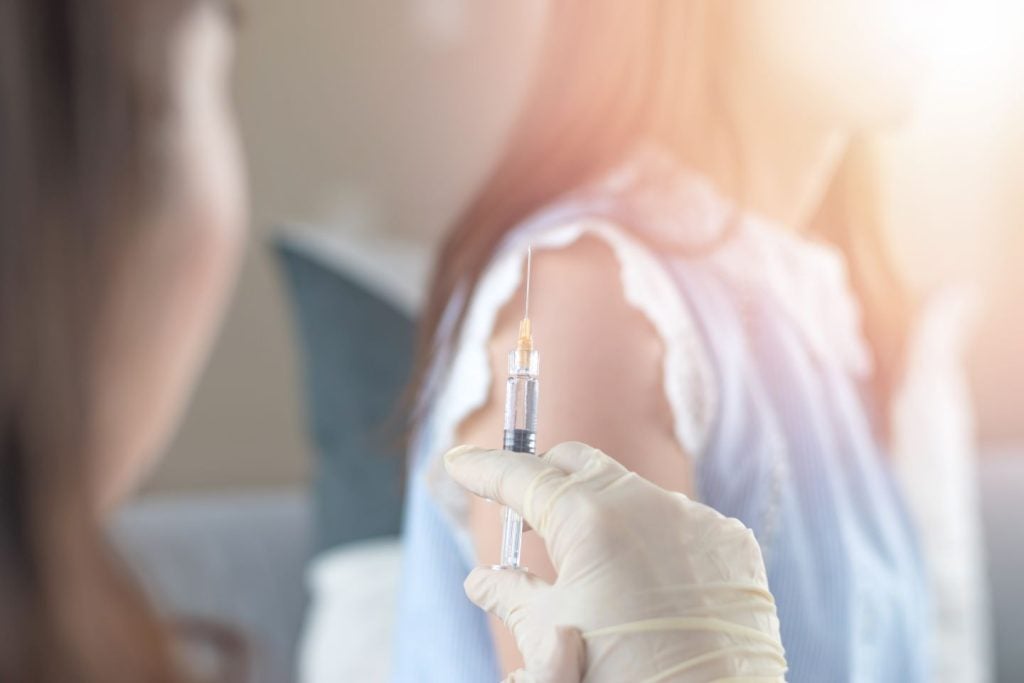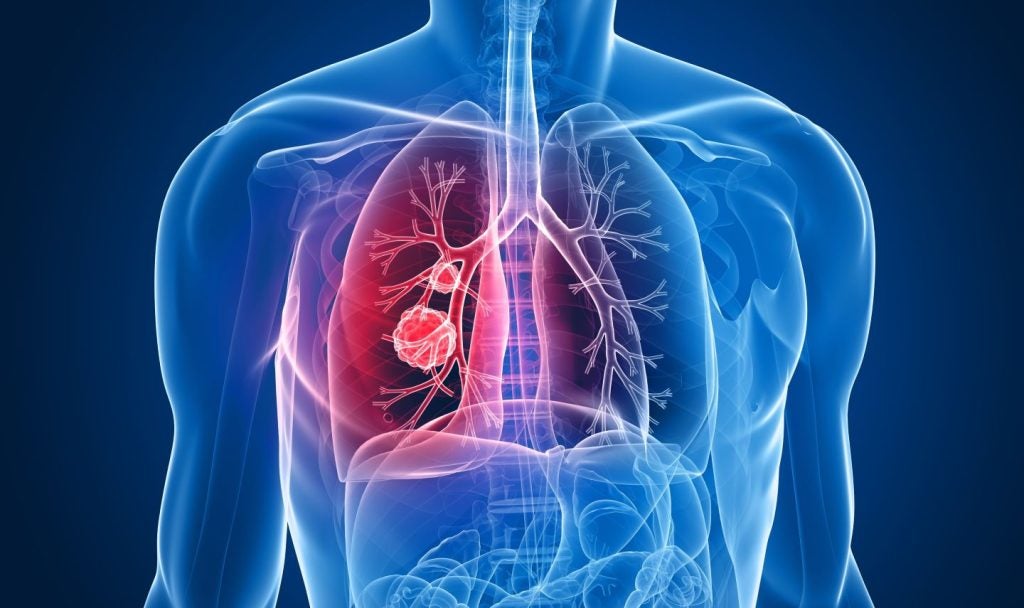
Need to know:
- Vaccine experts are fielding questions from people who received a single dose of the J&J vaccine of how likely they are to receive a single booster or maybe two. With mRNA vaccine developers seeking full approval, this opens the potential of off-label use for their double-dose vaccines.
- Even if a two-dose schedule of an mRNA vaccine were to be deployed among single-dose J&J vaccine recipients, it will only be for highly selected, immunocompromised people. And most single-dose J&J vaccine recipients are younger people.
- There is still overall limited data to support J&J vaccine recipients from receiving a second dose. Existing single-dose data shows the vaccine is still potent even in the face of the durability questions and the Delta variant of concern.
Questions swirl on the possibility of deploying two-dose mRNA vaccines in those who have had a single dose of Johnson & Johnson’s Covid-19 vaccine, even if this approach has several arguments for investigation.
With talk of boosters for all a hot topic in the US, people who received single-dose JNJ-78436735 vaccination are raising questions about whether a single booster would be enough or if there is a need for a second and then a third dose, said Upstate Medical University Department of Microbiology and Immunology interim chair Dr Stephen Thomas. A second and third dose would mean J&J vaccine recipients would have the same number of total doses as mRNA vaccine recipients who received the initial two doses plus the possibility of a third.
Once mRNA vaccines secure their full approval from the FDA, this would open the potential for their two-dose vaccines to be used off-label, which is not possible under their current Emergency Use Authorizations (EUA), noted ProHealth Healthcare Division of Infectious Disease chief Dr Daniel Griffin. Off-label use may allow broader use of the two-dose mRNA vaccines, even in people who already received single-dose JNJ-78436735, he added. On 7 May, Pfizer and BioNTech announced they had sought full approval for Comirnaty (BNT162b2) in people 16 years and older, with Moderna doing so on 1 June in people at least 18 years old for Spikevax (mRNA-1273).
But to understand the potential of two doses of mRNA vaccines after single-dose JNJ-78436735, there are three questions that need to be answered first, noted Midwest Biomedical Research chief scientist Dr Kevin Maki. Specifically: which group of people would receive two subsequent doses instead of one? Do single-dose J&J vaccine recipients need any boosters at all? When should boosters for J&J vaccines be deployed?
Double boosters won’t be for all
Even if single-dose JNJ-78436735 recipients are FDA-sanctioned to receive two subsequent doses of an mRNA vaccine, it will be unlikely for all, said Thomas, who is a Phase III Comirnaty investigator. Specifically, people with compromised immune systems would be prioritised, he added. On 12 August, the FDA amended its EUA for both mRNA vaccines, allowing a third dose in certain immunocompromised individuals.
How well do you really know your competitors?
Access the most comprehensive Company Profiles on the market, powered by GlobalData. Save hours of research. Gain competitive edge.

Thank you!
Your download email will arrive shortly
Not ready to buy yet? Download a free sample
We are confident about the unique quality of our Company Profiles. However, we want you to make the most beneficial decision for your business, so we offer a free sample that you can download by submitting the below form
By GlobalDataAnd even then, it is possible that a third dose may not be helpful in all immunocompromised patients, Griffin said. In patients who have dialysis or have received organ transplant, if they do not have a vaccine-induced antibody response after the second dose, they are also unlikely to do so after the third dose, he explained.
The elderly are possible candidates for a supplemental two-dose mRNA vaccine due to their weaker immune systems, Maki said. But in the middle-aged, it will be unlikely for all, and subsequent two-dose deployment may depend on how healthy the person’s immune system is, he noted.
Most J&J recipients are younger adults
Nevertheless, due to the J&J vaccine being a single-dose vaccine, most people who took this vaccine are likely to be younger people, added Ghent University’s Faculty of Medicine & Health Science professor emeritus Geert Leroux-Roels. Single-dose J&J vaccine secured its EUA from the FDA on 27 February for people aged 18 years and older.
Due to younger people’s robust immune systems, this population may require additional doses only in two to three years, Leroux-Roels said. In fact, a further dose may never be needed; in that timeframe, it is possible that the circulating SARS-CoV-2 may only induce milder symptoms due to the ramping up of vaccines, he noted. These milder infections would be enough to boost immunological memory instead of a vaccine, Leroux-Roels added, who is an investigator in the Phase III ENSEMBLE 2 trial studying two-dose JNJ-78436735 (NCT04614948).
With many J&J vaccine recipients having been recently vaccinated, there is potential for unknown side effects from triggering the immune system too frequently with the addition of two more doses so soon, said Dr Peter Palese, professor at Icahn School of Medicine’s Department of Microbiology in New York. As of 15 August, 13.89 million people in the US had received single-dose JNJ-78436735.
J&J faced US rollout hiccups
J&J vaccine’s rollout in the US faced two major delays: an 11-day pause in April to review the rare side effect of vaccine-induced thrombosis and thrombocytopenia (VITT), and about 60 million doses had to be discarded after an FDA review of its manufacturing facility in June. On 23 July, this news service reported VITT with adenovirus-vectored vaccines is unlikely to be a significant issue if used as a third dose after a two-dose schedule of the same technology as it is primarily observed with the primer dose.
Experts agreed they are receptive to the idea of switching from an adenovirus-vectored vaccine, such as the J&J vaccine, to an mRNA vaccine during a revaccination campaign. Such a swap would undercut the risk of an anti-vector immune response triggered by adenovirus-vectored vaccines. Additional doses of the same technology may not be as effective due to the response caused by the initial vaccine schedule, this news service reported 12 February.
A Pfizer spokesperson said the company is currently not able to discuss mixed schedules but it is critical for health authorities to make evidence-based recommendations based on studies and surveillance efforts on the combination of vaccine technologies. Off-label use of vaccines would make it challenging to monitor recipients, Griffin noted.
There are no public trials investigating a single-dose JNJ-78436735 followed by a double-dose mRNA vaccine. However, Pfizer/BioNTech are investigating a two-dose, variant of concern-specific version of Comirnaty in a Phase III trial (NCT04368728) to be used in people who completed the original two-dose schedule. On 3 May, this news service reported a fourth dose may be redundant as a third dose may be enough to lift immunogenicity levels to restore protection potential.
Suboptimal efficacy perception
Data from the Phase III ENSEMBLE 2 trial, which is investigating two-dose JNJ-78436735, will be available in the coming months, a J&J spokesperson said. On 7 April, this news service reported that experts were mixed if the second dose should be deployed at all for everyone who has received the single dose. But those comments came before the Delta variant gained momentum in the US.
There is public perception that the single-dose JNJ-78436735 is a suboptimal vaccine compared with two-dose mRNA vaccines, Griffin said. There are multiple news reports showing J&J vaccine recipients are actively seeking a second mRNA vaccine dose even if this is not supported by the FDA; San Francisco earlier this month allowed single-dose “supplemental doses” of an mRNA vaccine among JNJ-78436735 recipients.
Are J&J boosters needed at all?
Still, at present, talk of additional doses – single or double – for any J&J vaccine recipients in the US is premature based on available data, experts agreed. Specifically, the J&J vaccine as a single dose has robust data against the Delta variant, noted Phase III single-dose JNJ-78436735 investigator and Alabama Vaccine Research Clinic director Dr Paul Goepfert.
According to data from a South Africa-based Phase IIIb trial recruiting 480,000 healthcare workers, single-dose JNJ-78436735 is 71% effective against hospitalisations and as much as 96% effective against death, news reports show. Both South Africa and the US have the Delta variant as the most prevalent variant of concern.
The J&J spokesperson pointed to a Phase I/IIa substudy's (NCT04436276) data showing a single dose of its vaccine provides both antibody and T-cell immune responses against SARS-CoV-2 variants, which persisted eight months after immunisation. Moderna did not respond to a comment request.
Third J&J dose unlikely
If a second dose of JNJ-78436735 would be deployed for all J&J vaccine recipients, a third may not be necessary for most as two would be enough to rejuvenate most recipients’ immunological memory, Thomas noted. In fact, based on the experience with AstraZeneca’s Vaxzevria (AZD1222), which is also an adenovirus-vectored vaccine, the longer gap between the first two doses may be beneficial, he added. The longer gap allows maturation of the immune response triggered by the first dose, he explained.
At present, the best argument for deploying a second dose of the J&J vaccine is to prevent viral transmission, Goepfert said. However, prevention of transmission is unlikely to be the main goal by local or international policymakers considering this would require an extremely high level of vaccination rates, he added.
Current US infections mainly from unvaccinated
Experts noted that the current wave of infections in the US is not due to breakthrough infections, but in people who have not been vaccinated, which argues against deployment of JNJ-78436735 boosters. On 13 August, the US reported a total of 77,806 people hospitalised with Covid-19, a dramatic increase from 12,220 people recorded on 27 June. As of 16 August, 50.34% of US adults are fully vaccinated, with 59.32% receiving at least a single vaccine dose.
It is concerning that the potential of additional doses for all in the US is gaining momentum, considering much of the world has yet to receive a single dose due to limited supply, experts added. In the past two months, both mRNA vaccine companies have revealed data showing that their respective vaccines are still highly efficacious at six months, even with the Delta variant. Further, they released data showing how a third dose may help rejuvenate any loss of protection against any severity of disease, as well as reduced immunogenicity levels.
Nonetheless, a clear trigger to deploy boosters for JNJ-78436735 is that breakthrough infections among vaccinated people lead to hospitalizations, and if these people also have a reduced rate of neutralizing antibodies, Thomas said. Correlates of protection are still under investigation and would be key in finding out when boosters can be deployed, he added.







